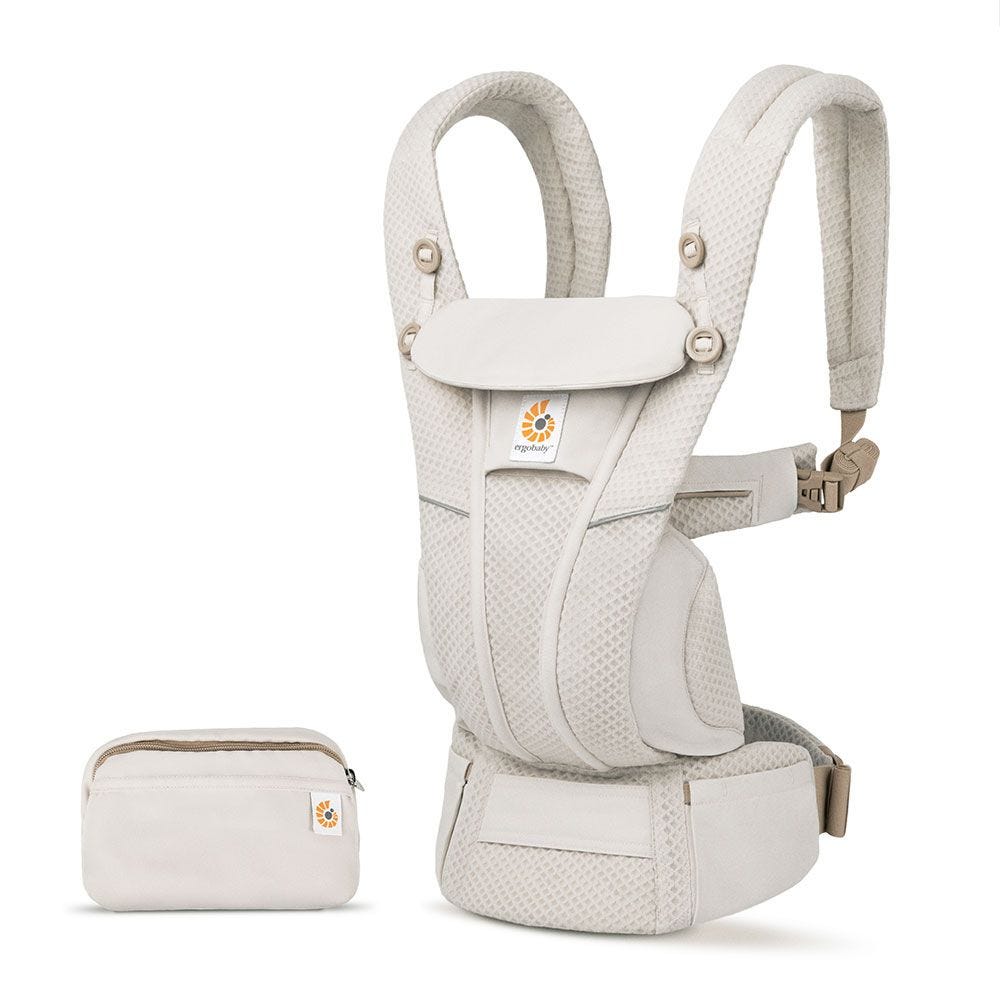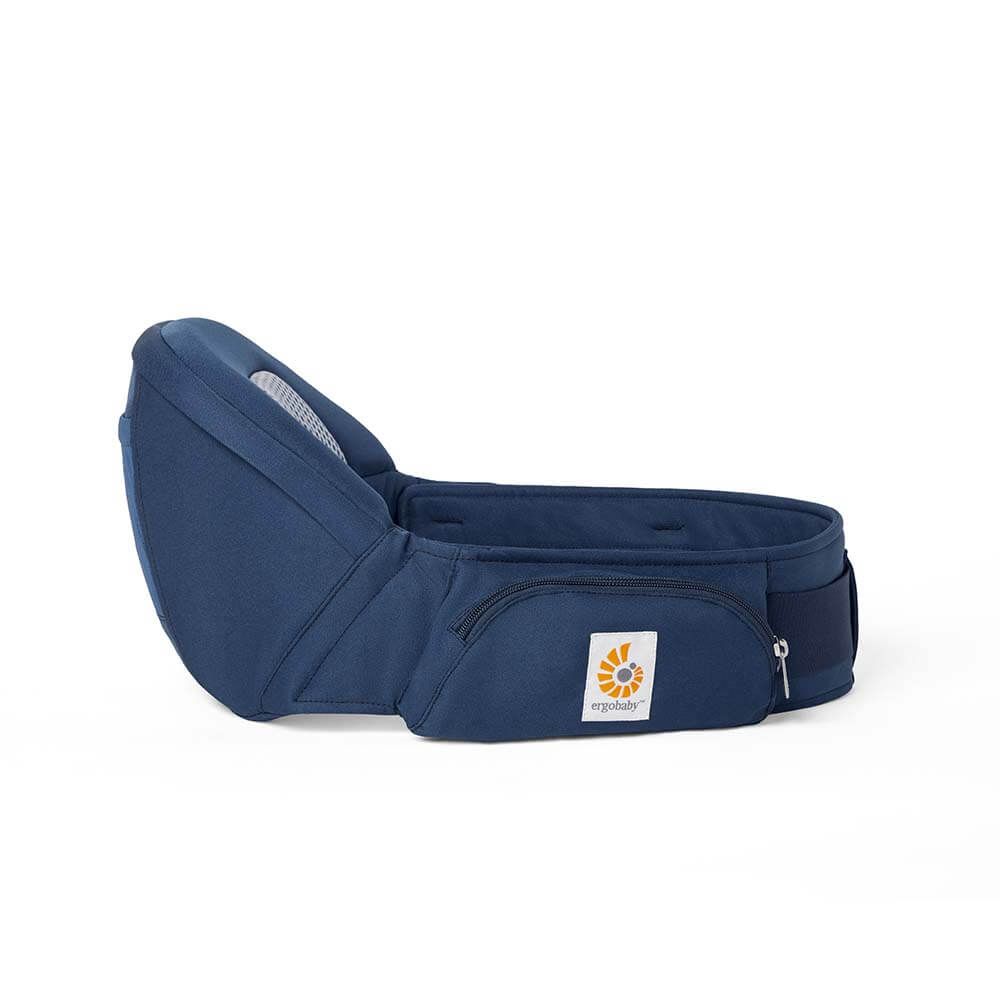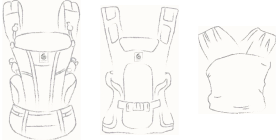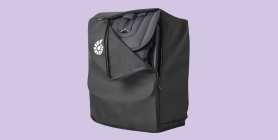Ergobaby
It’s a parenting right of passage, learning how to change a newborn nappy, but when you stand at the changing table for the first time and see this delicate creature lying in front of you, you may suddenly have doubts. It’ll become second nature soon enough, after all you’re going to have plenty of practice (8-12 times a day at the beginning!). And to help you feel even more confident, we've got a few helpful tips on how to ergonomically handle your baby while changing them, that will make it more comfortable for them and you.
What do you need to change your baby properly?
While this might not seem like rocket science, no one wants to find themselves in the middle of the changing process only to realise something is missing. Walking around with your half-naked baby in your arms is asking for trouble. So, having a checklist makes sure you’ve got what you need…
1. A safe space to change baby: Your changing table or changing station should be in a quiet and warm place. Always secure your
Crying is one of the few ways babies communicate their needs to the world. Whether they are hungry, uncomfortable, or in need of comfort, a baby crying in sleep is a natural signal to let us know something is wrong. “Hey Mama/Papa! Come help me!”
During the day, it’s relatively easy to distinguish the cause of their crying, but at night, when we can also be tired and confused, it can often be more challenging. Babies wake frequently at night, especially in the early months, because they require a feed, a nappy change, or simply want reassurance and comfort. However, some babies also cry during sleep itself, which can be confusing and concerning for parents.
It’s important to understand that in the early months, waking and crying at night is perfectly normal. Babies have many needs during the night, and waking up to meet those needs is a healthy, normal part of their development. If your baby wakes up crying, it could be that they’re hungry or uncomfortable, and responding to those basic
Would you like to win a spook-tacular Ergobaby bundle worth over £1,000? We've turned our website into a pumpkin patch... find all six hidden pumpkins for your chance to win!
And what's the prize?
Just treats, no tricks! Our winner will receive a bundle of ergonomic baby essentials worth over £1000! It contains: x1 Embrace newborn carrier x1 Evolve 3-in-1 bouncer x1 Metro+ Deluxe pushchair x1 Omni baby carrier x1 Lift hip seat x1 Evolve 3-in-1 high chair If you win, you can choose whichever colour and style you like (subject to availability)!

How does it work?
- Visit our website whenever you have a moment (it's the perfect activity for when you're nap-trapped!)
- Scroll through our products and look for the six hidden pumpkins
- Make a note of the six products (including the colour/fabric) where you found the pumpkins hiding (it doesn't matter in which order you find them in)
- Submit your answers via our form for your chance to win an ergonomic baby essentials bundle
Humans are a carrying species. This means we have carried our babies since the beginning of time, across the most diverse cultures. And this also applies to children with disabilities too, including those with Down syndrome (also known as trisomy 21). A baby with Down syndrome has the same basic needs for love, security and cuddles as every child. Carrying them in a baby carrier or sling is a wonderful way to fulfil these needs and it is particularly beneficial to carry a baby with Down syndrome in a baby carrier. We would like to explain why this is the case in today's blog post.
What is Down Syndrome?
Why do we differentiate between carrying a non-disabled child and carrying a child with Down syndrome? Simply because a baby with Down syndrome has different needs. Down syndrome, also known as trisomy 21, is a genetic disorder in which the 21st chromosome is not present twice, but three times. This additional genetic material alters the course of development and causes the characteristics
Sitting, crawling, looking upwards - your baby's curiosity is their driving force. Day by day, month by month, they're inching closer to standing upright and the big milestone of "walking". As your little one nears the end of their tenth month, there are new baby milestones to observe. We'd like to share these with you, alongside insights from our expert Katrin Ritter. This month's focus: the half-kneeling position.
10th Milestone "Half-Kneeling" and Other 10-month Baby Milestones
On your knees, ready, go! The Half-Kneeling Position
Can your baby already get into the angled sitting position on their own? Are they also quite good at crawling? If so, you'll likely notice them pulling themselves up from crawling or angled sitting to a kneeling position against furniture this month. This stems from their boundless curiosity and urge to explore their world vertically.
Once your little one is kneeling, they'll likely try to stand one leg up, moving into an asymmetrical half-kneeling position.





















